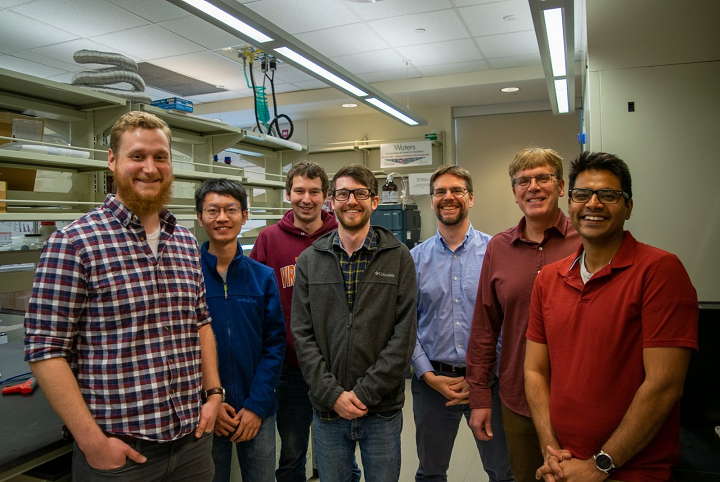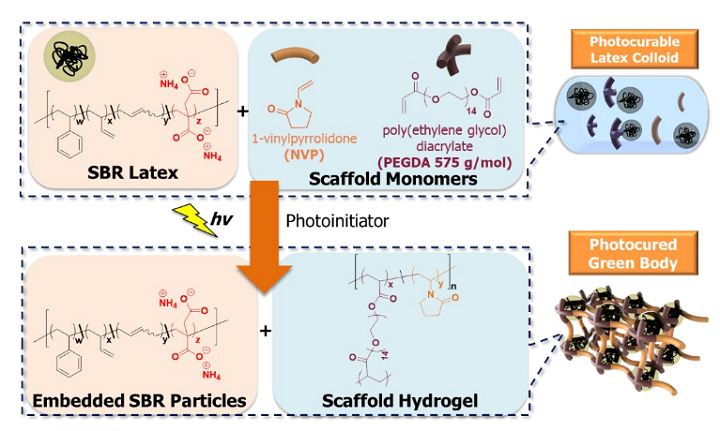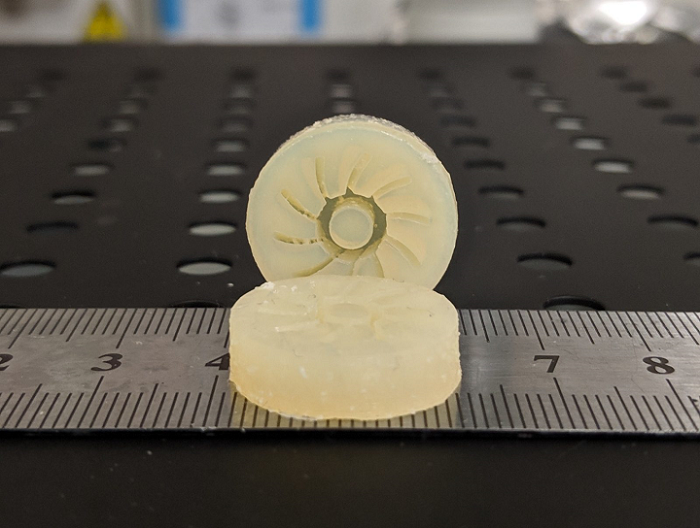Making a scientific or engineering breakthrough requires a lot of legwork and research, but also teamwork. An interdisciplinary group of Virginia Tech researchers from the Macromolecules Innovation Institute (MII), the College of Science, and the College of Engineering worked together to come up with a novel way to 3D print latex rubber, a development that the university states “has been documented only a handful of times in scientific literature.” Supported by a National Science Foundation award aligned with the Grant Opportunities for Academic Liaison with Industry program, Virginia Tech also collaborated with Michelin North America on the project.

Chemists and mechanical engineers from the research groups of Timothy Long and Christopher Williams collaborated on this project.
Timothy Long, a professor of chemistry and a co-principal investigator, said, “My philosophy is these types of innovations are only achievable when you partner with people who are very different from you. This project represents the quintessential example of interdisciplinary research. Neither of our labs would be able to accomplish this without the other.”
Typically found in paint and gloves, the rubbery, elastic material latex is actually a group of polymers that are coiled up like a snake inside nanoparticles dispersed in water. Successfully 3D printed, it could be used for many applications, such as medical devices, shock absorbers, and soft robotics, since the technology allows the material to be fabricated in complex geometric shapes. It’s important to note that this is not the first time we’ve seen 3D printed latex—researchers from Queen Mary University of London published a paper last year about their use of a drop-on-demand method to print this tricky material. But the Virginia Tech team went a different direction, and used vat photopolymerization, publishing the results in their own journal article.
“Vat photopolymerization (VP) additive manufacturing fabricates intricate geometries with excellent resolution; however, high molecular weight polymers are not amenable to VP due to concomitant high solution and melt viscosities. Thus, a challenging paradox arises between printability and mechanical performance. This report describes concurrent photopolymer and VP system design to navigate this paradox with the unprecedented use of polymeric colloids (latexes) that effectively decouple the dependency of viscosity on molecular weight,” the abstract states.
Fifth-year macromolecular science and engineering student Phil Scott had been trying to synthesize a latex material with the proper mechanical properties and molecular weight, but wasn’t having much luck. He then began working with commercial liquid latexes, but he had to figure out how to modify the chemical composition so it could be 3D printed in a solid form. Unfortunately, this is easier said than done, as liquid latex is very fragile.
“Latexes are in a state of zen. If you add anything to it, it’ll completely lose its stability and crash out,” explained Viswanath Meenakshisundaram, a fifth-year mechanical engineering Ph.D. student in the Design, Research, and Education for Additive Manufacturing Systems Lab.
To get past this issue, Scott built a scaffold that could hold the latex particles in place. Then, photoinitiators and other compounds were added so that UV light-assisted printing was possible.

Photocuring of PEGDA and NVP in the continuous phase of SBR latex yields hydrogel embedded with SBR particles.
“When designing the scaffold, the biggest thing you have to worry about is stability of everything. It took a lot of reading, even stuff as basic as learning why colloids are stable and how colloidal stability works, but it was a really fun challenge,” Scott said.
VP turns viscous resins into shapes by curing the material with UV light, and Meenakshisundaram was tasked with figuring out how exactly to print the material…so he built his own patent-pending system. He knew the machine would need to be able to print high-resolution features across a large area, and together with his advisor, co-principal investigator Christopher Williams, thought up a way to scan UV light across a large area.
Meenakshisundaram also had the idea of embedding a computer vision system onto the custom printer to ensure accurate, detailed prints, as fluid latex particles caused scattering outside of the UV light on the surface of the latex resin. The camera captures an image of each individual latex resin vat, and a custom algorithm allows the printer to essentially view the UV light’s interaction on the resin, and then adjust the print parameters accordingly in order to cure only the shape being printed.

Single-pixel intensity distribution, captured via computer vision, is used to compute the overall intensity profile for any pattern projected on the resin surface. Simulations of the intensity distributions arising from the projection of a square lattice (A) and the Schwarz lattice (B) illustrate the disagreement between the desired profile and the projected profile. The scattering at the edges [red and green regions in (A) and (B)] leads to the fabrication of oversized features with poor edge definition.
“The large-area scanning printer was a concept I had, and Viswanath made it into reality in short order. Then Viswanath came up with the idea of embedding a camera, observing how the light interacts with the material, and updating the printing parameters based on his code,” explained Williams, the L.S. Randolph Professor of mechanical engineering and interim director of MII. “That’s what we want from our Ph.D. students: We provide a vision, and they accomplish that and grow beyond as an independent researcher.”
All this hard work resulted in 3D printed latex parts, like an impeller, with strong mechanical properties in a semi-interpenetrating polymer network matrix, which the team claims had never before been documented for elastomeric latex materials.
“An interpenetrating polymer network is like catching fish in a net. The scaffold gives it a shape. Once you put that in the oven, the water will evaporate, and the tightly coiled polymer chains can relax, spread or flow, and interpenetrate into the net,” Meenakshisundaram explained.

Latex rubber parts, like this impeller 3D printed at 100 micron resolution, allow nondestructive reuse of complex molds because the parts exhibit a unique combination of flexibility and toughness.
According to the two professors on the team, 3D printed latex lays the foundation for printing many other materials that they say have not been printable in the past, like soft rubbers.
“When I was a graduate student working on this technology, we were excited to get unique performance from the shapes we could create, but the underlying assumption was we had to make do with very poor materials. What’s been so exciting about this discovery with Tim’s group is being able to push the boundary of what we assumed was the limit of a printed material’s performance,” said Williams.
(Source/Images: Virginia Tech)
Subscribe to Our Email Newsletter
Stay up-to-date on all the latest news from the 3D printing industry and receive information and offers from third party vendors.
You May Also Like
Gorilla Sports GE’s First 3D Printed Titanium Cast
How do you help a gorilla with a broken arm? Sounds like the start of a bad joke a zookeeper might tell, but it’s an actual dilemma recently faced by...
Nylon 3D Printed Parts Made More Functional with Coatings & Colors
Parts 3D printed from polyamide (PA, Nylon) 12 using powder bed fusion (PBF) are a mainstay in the additive manufacturing (AM) industry. While post-finishing processes have improved the porosity of...
$25M to Back Sintavia’s Largest Expansion of Metal 3D Printing Capacity Since 2019
Sintavia, the digital manufacturing company specializing in mission-critical parts for strategic sectors, announced a $25 million investment to increase its production capacity, the largest expansion to its operations since 2019....
Velo3D Initiates Public Offering in a Bid to Strengthen Financial Foundations and Drive Future Growth
Velo3D (NYSE: VLD) has been among a number of publicly traded 3D printing firms that have attempted to weather the current macroeconomic climate. After posting a challenging financial report for 2023,...
































